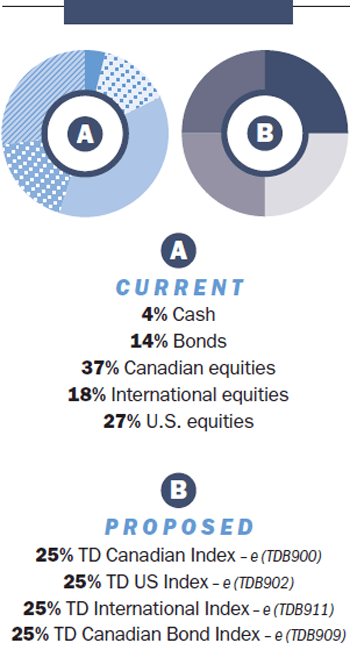Find a low-fee investing strategy
Bryn and Ruby want to simplify their portfolio.
Advertisement
Bryn and Ruby want to simplify their portfolio.

 The Solution
The SolutionShare this article Share on Facebook Share on Twitter Share on Linkedin Share on Reddit Share on Email